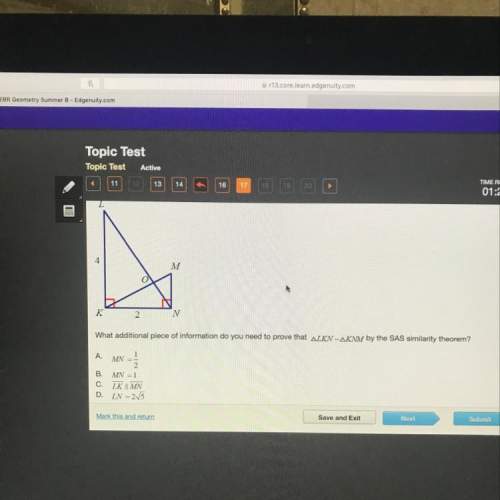
Mathematics, 30.07.2019 18:30 Soloaa
Determine the radius of convergence of the power series sigma_n = 1^infinity (-2)^n (n-3)^n/n. if y is a solution of the initial problem xy" + (in x)y' + (x^2 + 1)y = 0, y(1) = 2, y'(1) = -1, then y"(1) = and y^(3)(1) = .

Answers: 3


Other questions on the subject: Mathematics

Mathematics, 21.06.2019 18:30, monyeemonyee12
Find the area of a parallelogram with base 15 yards and height 21 2/3
Answers: 1

Mathematics, 21.06.2019 19:00, megkate
1. writing an equation for an exponential function by 2. a piece of paper that is 0.6 millimeter thick is folded. write an equation for the thickness t of the paper in millimeters as a function of the number n of folds. the equation is t(n)= 3. enter an equation for the function that includes the points. (-2, 2/5) and (-1,2)
Answers: 1

Mathematics, 21.06.2019 20:00, CelesteN64
For problems 29 - 31 the graph of a quadratic function y=ax^2 + bx + c is shown. tell whether the discriminant of ax^2 + bx + c = 0 is positive, negative, or zero.
Answers: 1
You know the right answer?
Determine the radius of convergence of the power series sigma_n = 1^infinity (-2)^n (n-3)^n/n. if y...
Questions in other subjects:













